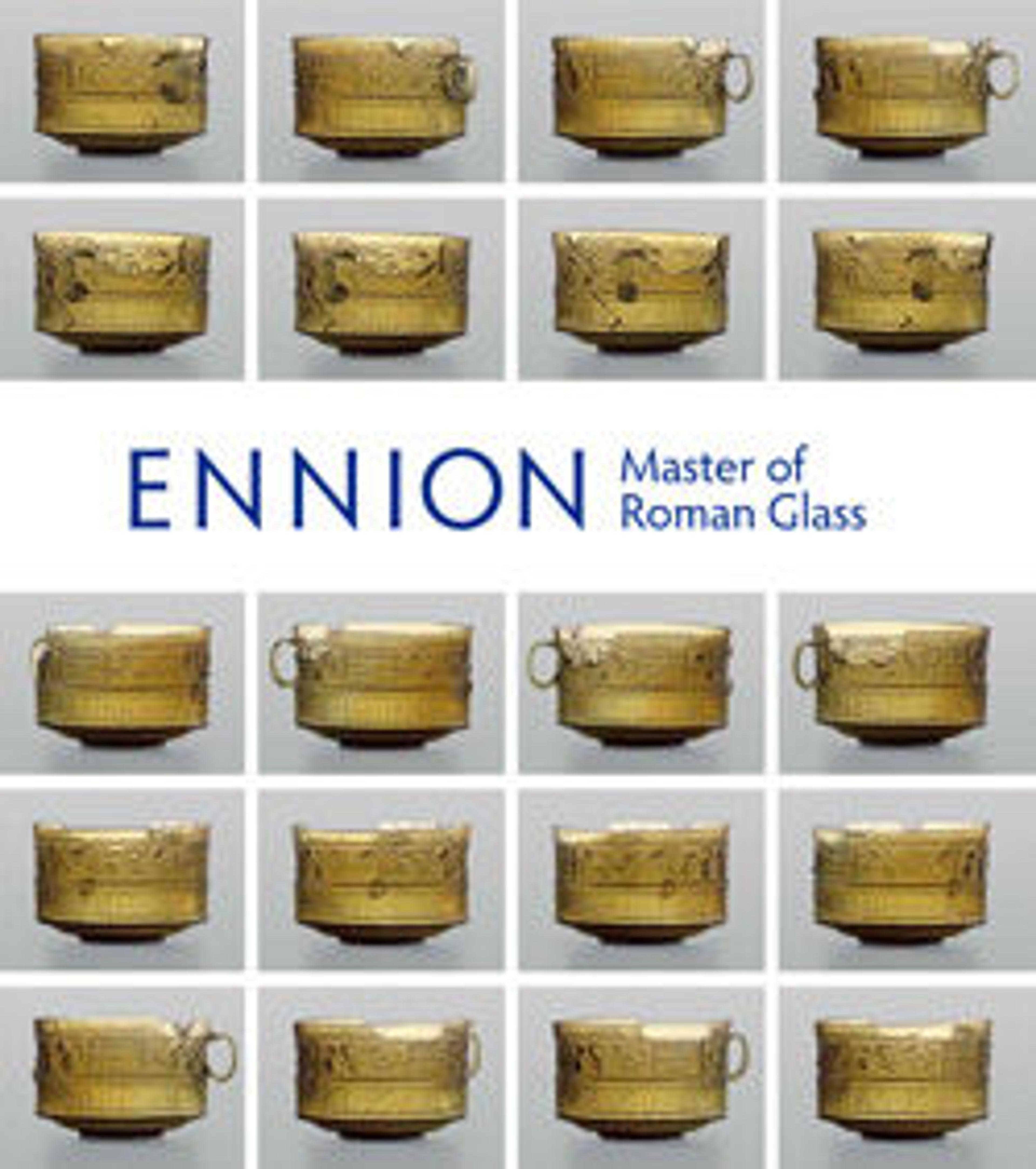Glass amphora (jar)
Translucent yellow green; handles in same color
Everted tubular rim, folded over and in; broad, cylindrical neck; convex bulging shoulder; elongated ovoid body tapering to a point; two rod handles applied as pads on shoulder, drawn up and slightly out, then turned in horizontally and pressed on to top of neck and underside of rim.
Thirty-four close-set horizontal ribs, extending from shoulder to lower body, then a plain band before a narrow group comprising one prominent horizontal rib flanked above and below by another shallower rib.
Base or foot missing and crack in top of one handle, otherwise intact; a few bubbles; some dulling, faint weathering, and iridescence on exterior, soil encrustation and iridescent weathering on interior.
Probably made in a three-part mold, comprising two side elements extending from neck to bottom of main ribbing on body and a cup-shaped bottom. It is uncertain whether the vessel had a knob base or a foot, but the former is more probable.
This is an unusually large mold-blown glass vessel, for which no parallel is known. But the quality of the piece suggests that it may be associated with a leading workshop, such as that of Ennion. Three of his products are displayed in the adjacent Augustan gallery.
Everted tubular rim, folded over and in; broad, cylindrical neck; convex bulging shoulder; elongated ovoid body tapering to a point; two rod handles applied as pads on shoulder, drawn up and slightly out, then turned in horizontally and pressed on to top of neck and underside of rim.
Thirty-four close-set horizontal ribs, extending from shoulder to lower body, then a plain band before a narrow group comprising one prominent horizontal rib flanked above and below by another shallower rib.
Base or foot missing and crack in top of one handle, otherwise intact; a few bubbles; some dulling, faint weathering, and iridescence on exterior, soil encrustation and iridescent weathering on interior.
Probably made in a three-part mold, comprising two side elements extending from neck to bottom of main ribbing on body and a cup-shaped bottom. It is uncertain whether the vessel had a knob base or a foot, but the former is more probable.
This is an unusually large mold-blown glass vessel, for which no parallel is known. But the quality of the piece suggests that it may be associated with a leading workshop, such as that of Ennion. Three of his products are displayed in the adjacent Augustan gallery.
Artwork Details
- Title:Glass amphora (jar)
- Period:Early Imperial
- Date:early 1st century CE
- Culture:Roman
- Medium:Glass; probably blown in a three-part mold
- Dimensions:8 5/8in. (21.9cm)
Diameter: 3 1/2 in. (8.9 cm)
Width (handles): 3 7/8 in. (9.8 cm) - Classification:Glass
- Credit Line:Gift of Henry G. Marquand, 1881
- Object Number:81.10.49
- Curatorial Department: Greek and Roman Art
More Artwork
Research Resources
The Met provides unparalleled resources for research and welcomes an international community of students and scholars. The Met's Open Access API is where creators and researchers can connect to the The Met collection. Open Access data and public domain images are available for unrestricted commercial and noncommercial use without permission or fee.
To request images under copyright and other restrictions, please use this Image Request form.
Feedback
We continue to research and examine historical and cultural context for objects in The Met collection. If you have comments or questions about this object record, please contact us using the form below. The Museum looks forward to receiving your comments.
